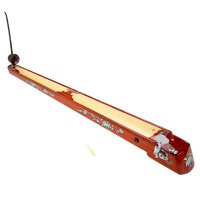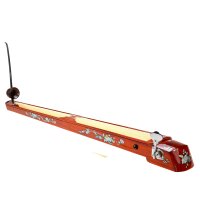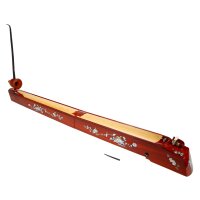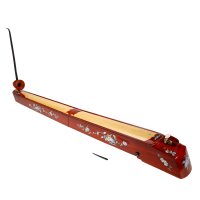Dan Bau
The Dan Bau (Đàn bầu) originates from Vietnam. It is a one-stringed stick zither (or monochord), which has been known since about 1770. At that time the instrument consisted of a bamboo stick with the shell of half a coconut as soundbox. In the meantime, other materials have come into use but the basic principle remains the same.
The characteristic flageolet sounds (overtones) are generated when the player lightly touches the string in several places with the heel of his hand while at the same time plucking it with a plectrum made of bamboo, horn or plastic, which he holds in the same hand. The other hand varies the basic tension of the string by means of a long, flexible rod made of bamboo. This generates a bright, clear glissando sound when playing. Various techniques allow widely differing sounds and vibrato effects are also typical.
Originally, the Dan Bau was considered a solo instrument - especially in the rural areas of Vietnam. This is probably mainly due to its generally low volume. For this reason, it is also used as accompaniment for poetry readings. Nevertheless, even the Dan Bau has not remained unaffected by technological progress. Modern amplifiers make it possible to use the Dan Bau in rock and pop music. And various soloists have realized how interesting the instrument sounds together with an electric guitar.
The string of the Dan Bau is normally tuned to the key of C. However, some musicians change this if they want to use the instrument in a modern context. Then it is tuned to A.



